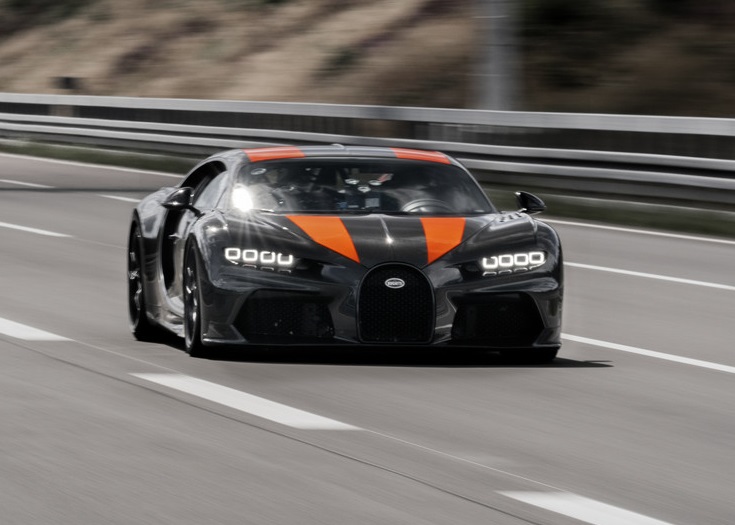It is fair to say that Bugatti’s 300 mph run has caused plenty of questions. The 304 mph top speed was achieved in only one, with a car that isn’t (yet) commercially available and with a string of modifications. Clearly, it doesn’t qualify for the coveted Guinness World Record for the fastest production car. That accolade remains with the Koenigsegg Agera RS. To combat some of these questions, Bugatti has released a second statement.
Shedding some light on the test, Bugatti’s President, Stephen Winkelmann explains that there are “four crucial factors when it comes to making a record attempt: the vehicle, the track, the location and the weather.”
The press release then explains that the 21-kilometre, three-lane Ehra-Lessien track (the scene of Bugatti’s record attempts) is lined with crash barriers, and rescue services are available at the north and south ends. It explains that special mats are used to clean the carriageway before each test. So Ehra-Lessien is apparently very safe.
It then goes on to assert that the track sits just 50 metres above sea level. Something which puts it at a disadvantage to tracks at a higher altitude, such as the Nevada highway Koenigsegg used to set its top speed record. At higher altitude, the air pressure is reduced causing aerodynamic drag to reduce and top speed to increase.
The air density at an altitude of 1,000 metres decreases by about 10 percent as compared to sea level which fancy scientists tell us has a massive effect at 300 mph. The press release eventually draws the conclusion that the Chiron would have been 25 km/h (15 mph) faster in Nevada (which you will recall is where the Koenigsegg Agera RS set its official record).
Bugatti then confirms that they considered this but decided against it on the grounds of accessibility should an incident occur. The release concludes that Bugatti will withdraw from the competition to produce the fastest serial production cars.
Top Gear also appeared to confirm that there are issues with running cars at 300 mph on Ehra-Lessien. Apparently, years of testing in a clockwise direction on the circuit has resulted in a surface with a grain unfavourable to an anti-clockwise run. A top speed run at 300 mph would generate too much heat in the Chiron’s tyres.
This means that, in the eyes of the Guinness World Record committee, the Chiron will not hold an official record as the world’s fastest car.















